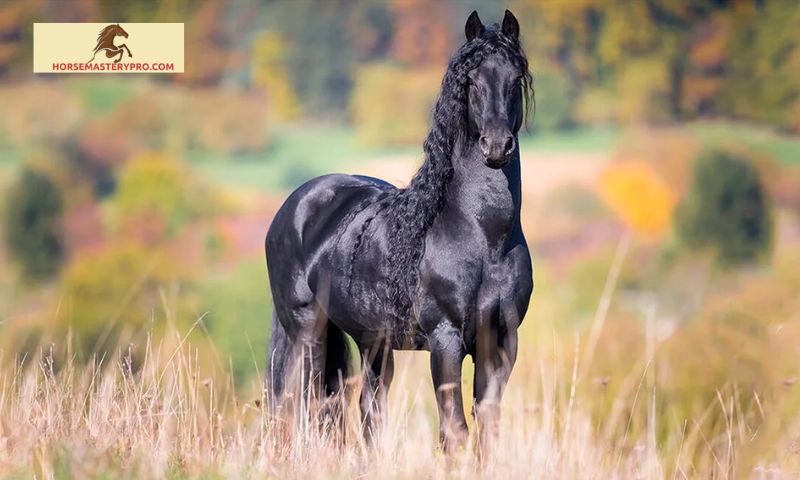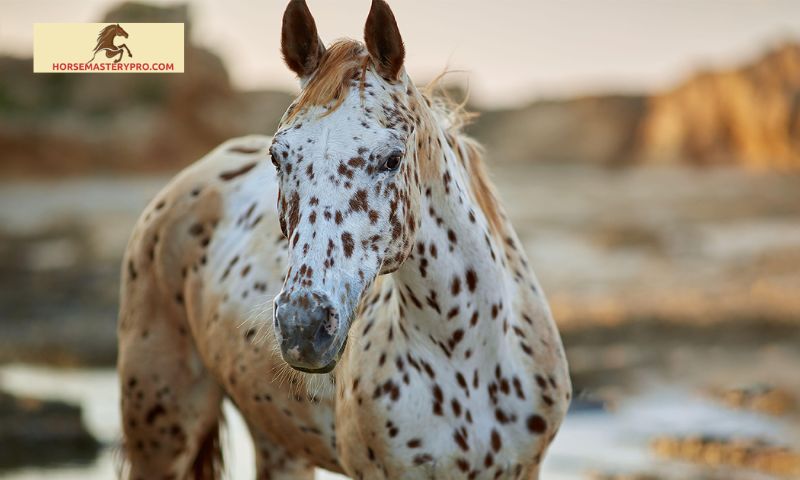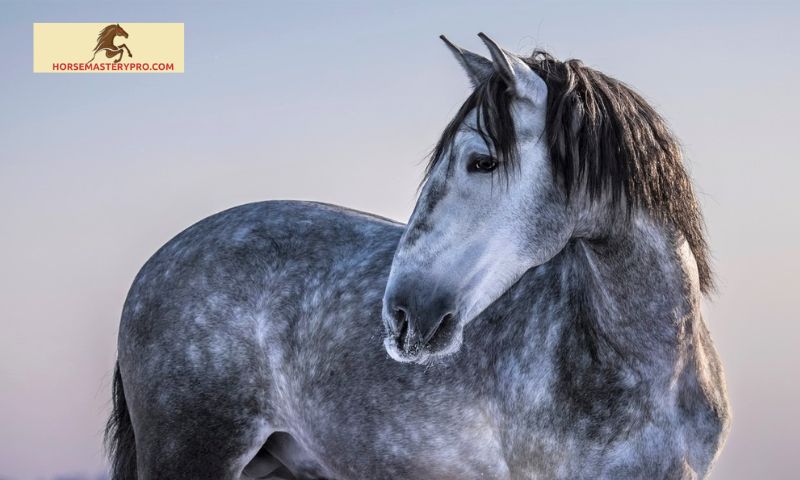Discover the rich heritage of popular horse breeds in Europe, from the majestic Arabian and Lipizzaner to the elegant Andalusian. Dive into their origins, characteristics, and historical significance.
Europe, a land steeped in rich history, has been a cradle for various horse breeds, each with its own unique charm and significance. As horsemasterypro.com embark on this journey through time, let me introduce you to the captivating world of horse breeds in Europe. From the spirited Arabian horses to the regal Lipizzaners and the elegant Andalusians, Europe boasts a diverse array of equine companions that have left an indelible mark on its history and culture.
A. Overview of Horse Breeds in Europe
Europe is home to a wide range of horse breeds, known for their distinctive characteristics and versatility. These magnificent creatures have played a pivotal role in European societies, serving as trusted companions, reliable workhorses, and even esteemed war mounts. From the windswept moors of the British Isles to the sun-drenched plains of the Mediterranean, the continent’s diverse landscapes have given rise to an equally diverse collection of horse breeds.
B. Importance of Horse Breeds in European History
Horse breeds have long held a special place in European history, shaping the destinies of nations and leaving an indelible mark on cultural traditions. Throughout the centuries, these noble creatures have been instrumental in transportation, agriculture, and warfare, enabling the advancement of civilizations. The bond between humans and horses runs deep, and their significance in European history cannot be overstated.
As we delve deeper into the enchanting world of European horse breeds, we will uncover the secrets behind their origin, learn about their distinct characteristics, and explore the cultural significance they hold in their respective regions. Get ready to be captivated by the remarkable stories and breathtaking beauty of these magnificent equines that have stood the test of time.
Stay tuned for the next section as we embark on a captivating journey through the popular horse breeds of Europe, beginning with the spirited Arabian horses and their fascinating origins.
Lesser-Known European Horse Breeds

Europe is not only home to well-known horse breeds but also houses some hidden gems – lesser-known breeds that possess their own distinct beauty and charm. Let’s take a closer look at two of these remarkable equine companions.
A. Friesian Horses
- Origins and Distribution in Europe
The Friesian horse, originating from the province of Friesland in the Netherlands, is a breed that exudes elegance and grace. With a history that dates back to the Middle Ages, Friesians have been cherished as versatile horses. They were highly sought after by knights during medieval times and were used for transportation and agricultural purposes. Today, Friesians are predominantly found in the Netherlands and have gained popularity worldwide.
- Unique Traits and Uses
Friesians are known for their striking black coat, flowing manes, and feathered legs, which add to their majestic appearance. With a powerful build and a gentle disposition, these horses excel in dressage and driving disciplines. Their high-stepping trot and natural athleticism make them a favorite among equestrians seeking a combination of beauty and performance. Friesians are also cherished for their kind nature, making them excellent companions and show horses.
B. Connemara Ponies
- Irish Breed with European Influence
Originating from the rugged Connemara region in Ireland, Connemara ponies are a testament to the resilience and adaptability of equines. Influenced by Arabian and Welsh pony bloodlines, Connemaras possess a unique blend of strength, intelligence, and agility. These ponies have thrived in the harsh Irish landscape for centuries and have captured the hearts of horse enthusiasts around the world.
- Adaptability and Versatility
Connemara ponies are renowned for their versatility, excelling in various equestrian disciplines. Their compact yet sturdy build allows them to navigate challenging terrains with ease, making them ideal for eventing, show jumping, and cross-country riding. Additionally, their calm temperament and willingness to please make them suitable for riders of all ages and skill levels. Whether you’re seeking a reliable partner for leisurely rides or a competitive mount, Connemara ponies are a breed that can do it all.
Stay tuned as we explore the regional variations in European horse breeds, uncovering the unique characteristics and cultural significance of horses across the diverse landscapes of the continent.
Regional Variations in European Horse Breeds

Europe’s diverse landscapes have given rise to regional variations in horse breeds, each with its own distinct characteristics and cultural significance. Let’s explore the different regions of Europe and the unique equine companions they have nurtured.
A. British Isles
The misty hills and lush meadows of the British Isles have given birth to a multitude of native horse breeds. From the mighty Shire horses, with their imposing size and strength, to the elegant Clydesdales, known for their grace and gentleness, these breeds have long been an integral part of the region’s agricultural and transportation industries. However, it’s important to note that the British Isles have also been influenced by horse breeds from continental Europe, resulting in fascinating crossbreeds that combine the best of both worlds.
B. Central Europe
Central Europe boasts a rich tapestry of diverse horse breeds, each with its own unique qualities and cultural significance. The Hanoverian, known for its athleticism and versatility, has become a prized breed in equestrian sports, while the Trakehner, with its regal presence and noble demeanor, has captured the hearts of many. Central Europe’s deep-rooted equestrian traditions and breeding practices have contributed to the development of these exceptional horses, making them highly sought after both within the region and beyond.
C. Mediterranean Region
The sun-drenched Mediterranean region is home to a fascinating array of horse breeds that have adapted to the challenging environmental factors of the area. The Camargue horses, native to the marshlands of southern France, are renowned for their agility and endurance, while the Marwari horses, hailing from the desert regions of Rajasthan, India, have captivated the world with their distinctive inward-turning ears and remarkable adaptability. These unique breeds have thrived in their respective habitats, showcasing the resilience and adaptability of horses in the face of diverse climates and terrains.
As we explore the regional variations in European horse breeds, we gain a deeper understanding of the intricate relationship between these magnificent creatures and the landscapes they call home. Stay tuned for the next section, where we will delve into the preservation efforts and challenges faced by these remarkable equines in Europe.
Preservation Efforts and Challenges for European Horse Breeds
Preserving the diverse heritage of European horse breeds is crucial to maintaining their genetic integrity and cultural significance. However, this endeavor comes with its fair share of challenges. Let’s delve into the efforts being made and the obstacles faced in ensuring the sustainability of these magnificent equines.
A. Role of Breed Associations and Organizations
Breed associations and organizations play a vital role in the preservation and promotion of European horse breeds. These dedicated groups work tirelessly to maintain breed standards, facilitate breeding programs, and provide support and resources to horse owners and enthusiasts. By establishing guidelines and certifications, they ensure the authenticity and quality of breed lines, safeguarding the distinct traits and characteristics that make each breed unique.
B. Threats to Genetic Diversity and Conservation
Despite the valiant efforts of breed associations, European horse breeds face several threats to their genetic diversity and conservation. Intensive breeding practices, urbanization, and changing agricultural landscapes have led to a decline in population numbers and the loss of genetic variation. Additionally, the increasing popularity of crossbreeding poses a risk to the purity of these breeds, potentially diluting their distinct traits and jeopardizing their future.
C. Strategies for Ensuring Future Sustainability
To ensure the long-term sustainability of European horse breeds, various strategies are being implemented. These include conservation breeding programs, which focus on maintaining genetic diversity and preventing inbreeding. Additionally, establishing protected breeding centers and promoting responsible breeding practices help preserve the integrity of breed lines. Public awareness campaigns and educational initiatives also play a crucial role in fostering appreciation for these breeds and encouraging their conservation.
By combining the efforts of breed associations, organizations, and passionate individuals, we can overcome the challenges and secure a bright future for European horse breeds. Together, we can ensure that these magnificent equines continue to grace our landscapes and enrich our lives for generations to come.
Stay tuned for the final section, where we wrap up our exploration of European horse breeds and reflect on the importance of preserving their legacy.
Conclusion
In conclusion, the horse breeds of Europe are a testament to the continent’s rich heritage and deep connection with these magnificent creatures. From the spirited Arabian horses with their fiery temperament and ancient origins to the elegant Lipizzaners, bred for their grace and strength, and the majestic Andalusians, known for their beauty and versatility, Europe offers a diverse range of equine companions.
Throughout history, these horse breeds have played a vital role in European societies, not only as working partners but also as symbols of prestige and power. Their contributions to transportation, agriculture, and even warfare have shaped the destinies of nations and left an indelible mark on cultural traditions.
Preserving the genetic diversity of European horse breeds is crucial for their sustainability and ensuring their continued influence in the future. Breed associations and organizations play a significant role in these preservation efforts, safeguarding the unique traits and characteristics that make each breed special.
At Horsemasterypro.com, we recognize the importance of maintaining the legacy of European horse breeds. We invite you to join us on a journey of discovery and appreciation for these captivating creatures, their remarkable histories, and the bond they share with humans.
As we conclude our exploration of horse breeds in Europe, remember to cherish the heritage and significance of these remarkable equines. Whether you’re a horse enthusiast, a rider, or simply someone fascinated by the wonders of nature, the world of European horse breeds offers a captivating tapestry of beauty, history, and companionship.
Embrace the enchantment of Europe’s horse breeds and continue your journey of horsemanship with Horsemasterypro.com, where we celebrate the magic and majesty of these remarkable creatures.
Join us next time as we delve into the lesser-known European horse breeds and uncover their hidden charms and unique contributions.
Remember to use bold for Horsemasterypro.com in the Conclusion section.


